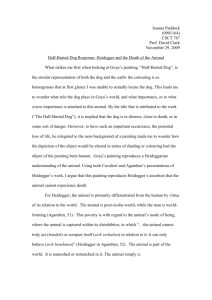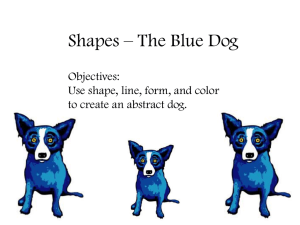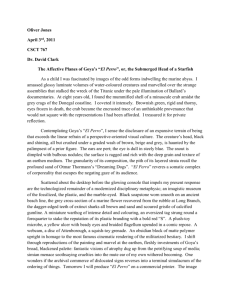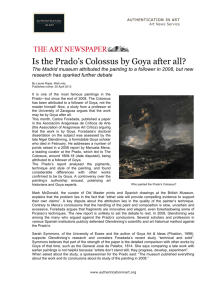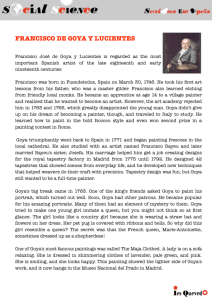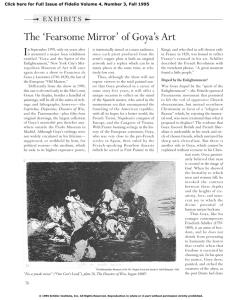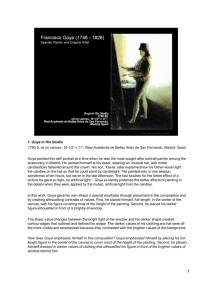Third Goya Reflection
advertisement
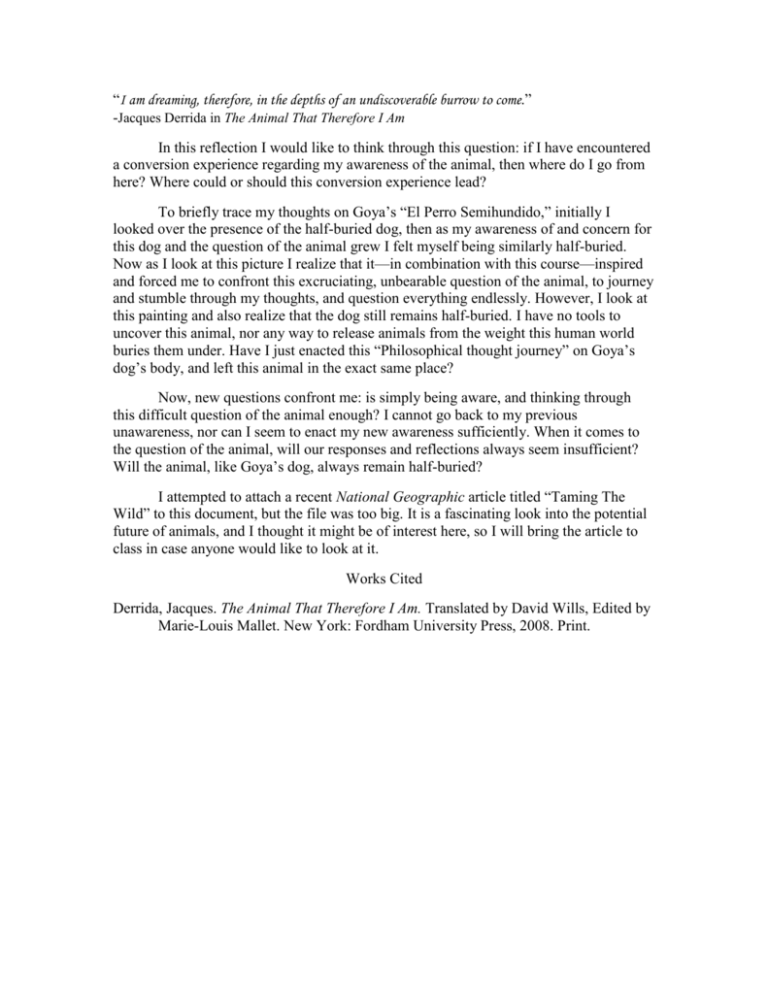
“I am dreaming, therefore, in the depths of an undiscoverable burrow to come.” -Jacques Derrida in The Animal That Therefore I Am In this reflection I would like to think through this question: if I have encountered a conversion experience regarding my awareness of the animal, then where do I go from here? Where could or should this conversion experience lead? To briefly trace my thoughts on Goya’s “El Perro Semihundido,” initially I looked over the presence of the half-buried dog, then as my awareness of and concern for this dog and the question of the animal grew I felt myself being similarly half-buried. Now as I look at this picture I realize that it—in combination with this course—inspired and forced me to confront this excruciating, unbearable question of the animal, to journey and stumble through my thoughts, and question everything endlessly. However, I look at this painting and also realize that the dog still remains half-buried. I have no tools to uncover this animal, nor any way to release animals from the weight this human world buries them under. Have I just enacted this “Philosophical thought journey” on Goya’s dog’s body, and left this animal in the exact same place? Now, new questions confront me: is simply being aware, and thinking through this difficult question of the animal enough? I cannot go back to my previous unawareness, nor can I seem to enact my new awareness sufficiently. When it comes to the question of the animal, will our responses and reflections always seem insufficient? Will the animal, like Goya’s dog, always remain half-buried? I attempted to attach a recent National Geographic article titled “Taming The Wild” to this document, but the file was too big. It is a fascinating look into the potential future of animals, and I thought it might be of interest here, so I will bring the article to class in case anyone would like to look at it. Works Cited Derrida, Jacques. The Animal That Therefore I Am. Translated by David Wills, Edited by Marie-Louis Mallet. New York: Fordham University Press, 2008. Print.
